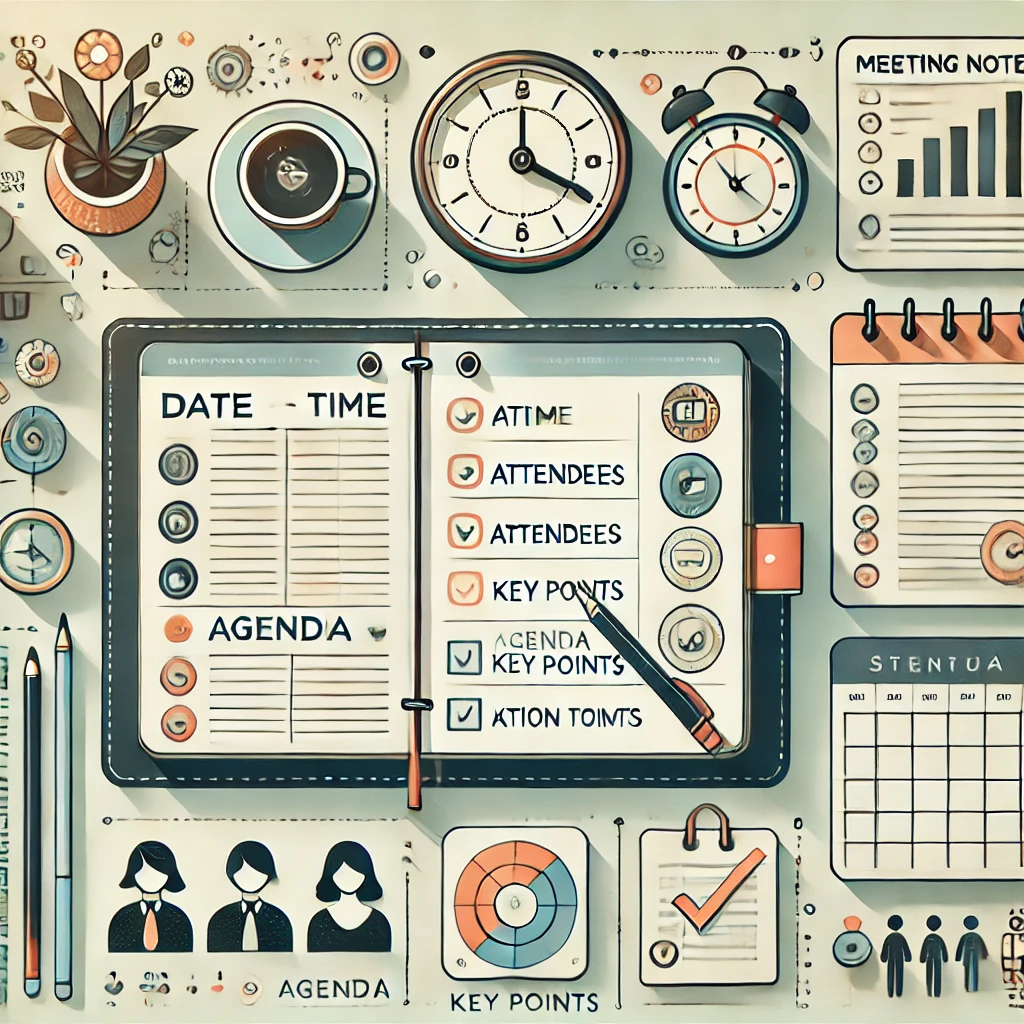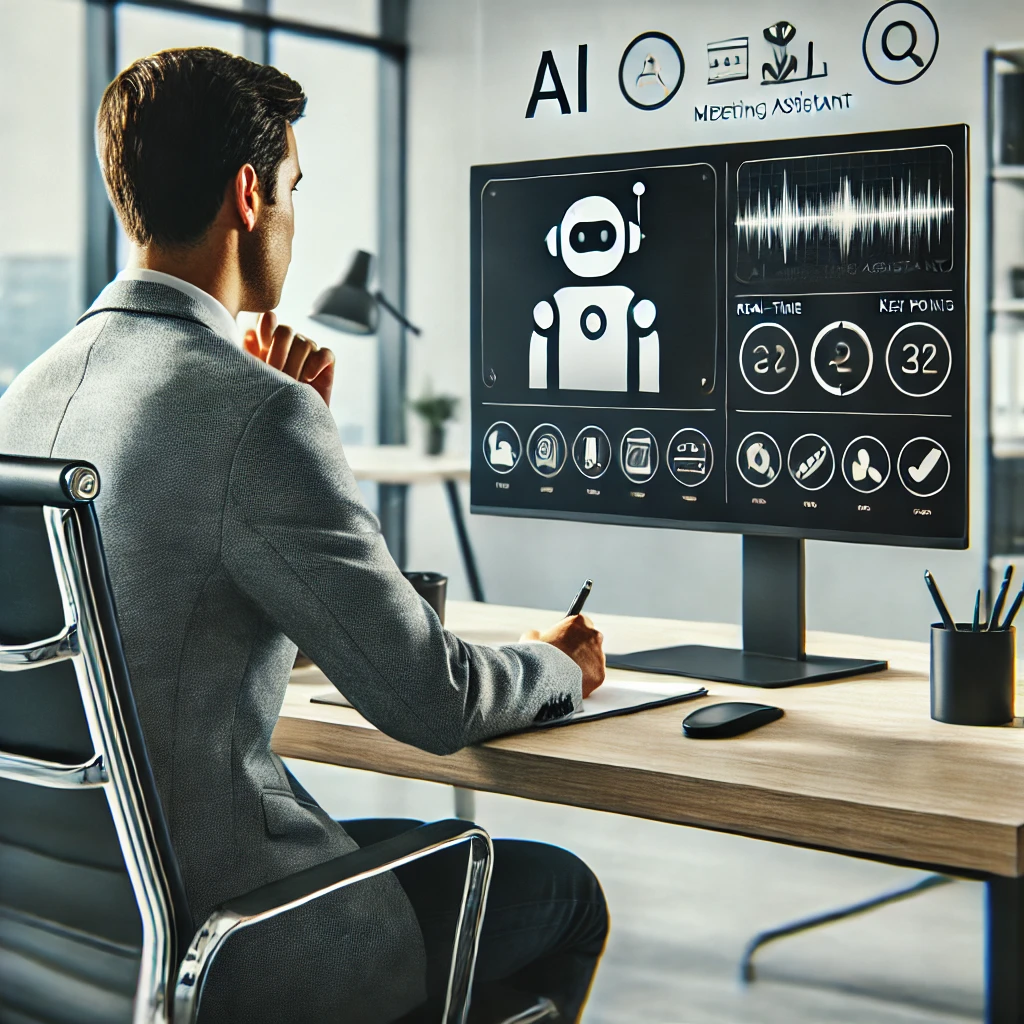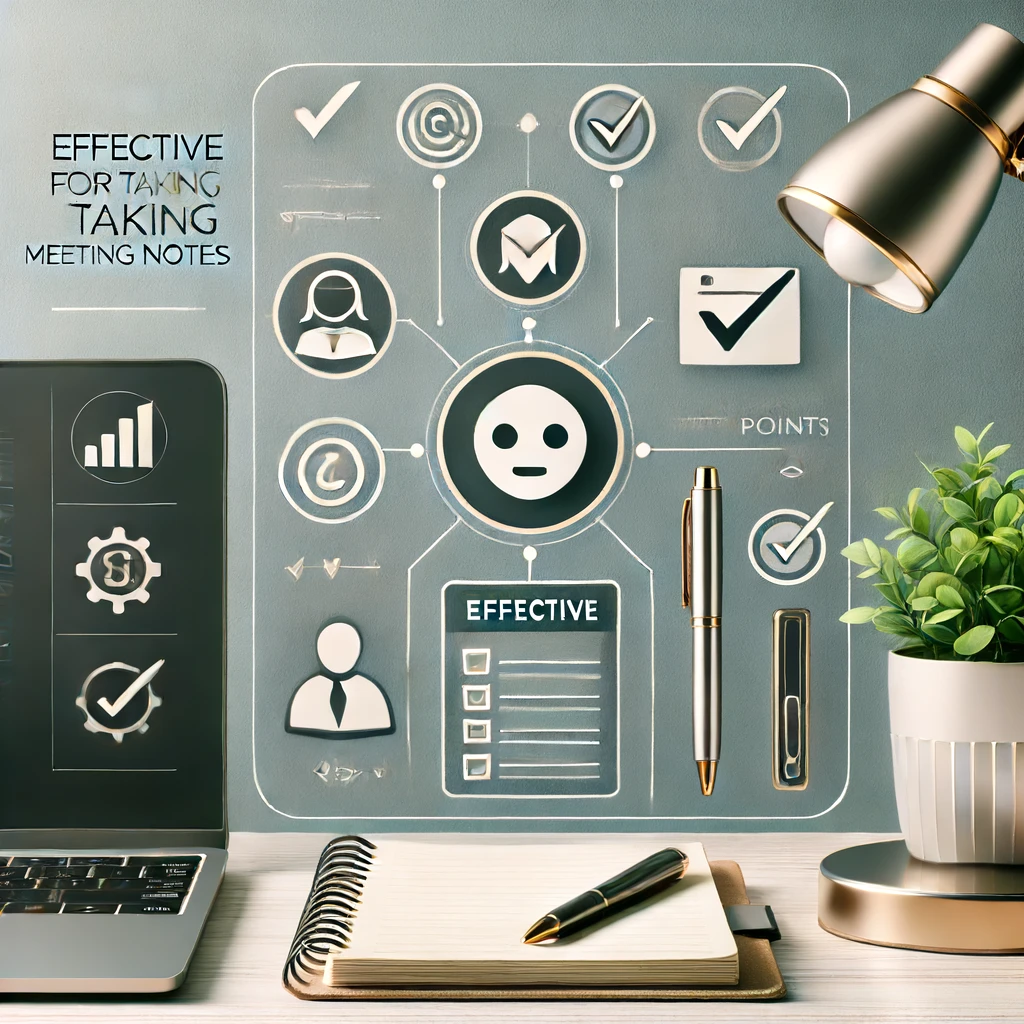Need help remembering most of the information shared in a meeting shortly after it ends? Have no fears — you’re not alone. Learning how to take meeting notes helps make good decisions and record critical ideas and action items.
Knowing how to take good meeting notes clarifies essential conversations and critical discussions and helps you stay organized. Also, it ensures that you capture and retain the key points discussed.
However, knowing how to write meeting notes isn’t enough. This article explains meeting notes and how they differ from meeting minutes. Also, it explores various note-taking techniques and unveils all you need to know about effective note-taking, including the five Rs.
Finally, this article shows how a leading AI Meeting Assistant creates notes with exceptional accuracy to keep participants engaged, informed, and on task.
How to Take Good Meeting Notes
Taking meeting notes is something most of us have had to do, but remembering those notes and how they apply to your responsibilities can be challenging.
Learning how to take effective meeting notes can save you a lot of time when going about your duties at work. And without them you’re stuck trying to remember, asking your colleagues for help, and worst, making mistakes.
What Are Meeting Notes?

Meeting notes are notes taken during an online gathering, capturing key discussion points, decisions, and action items.
Whether you’re looking for effective techniques or just learning how to take meeting notes, no need to worry. Note-taking is one of the biggest challenges most professionals face.
Knowing how to take notes for a meeting is a critical reference for future follow-ups. It helps you remember vital information. Moreover, learning how to take effective meeting notes enables you to record quick bullets or type out detailed transcripts and master this art.
Additionally, you create structured and insightful notes by applying effective strategies. As a result, you can stay organized and productive and enjoy high collaboration among your team.
Finally, in our increasingly AI-driven world, knowing how to use AI to take meeting notes effectively further increases productivity and efficiency.
Meeting Notes vs Meeting Minutes
Though some people use these terms interchangeably, you should distinguish meeting notes from minutes. Specifically, the first ones are less formal and capture the essence of the content discussed.
Besides, meeting notes often shorthand and clarify critical conversations and decisions. That’s why notes are widely used among project managers who usually use a template for one-to-one or kickoff meetings and project plans.
The term “meeting minutes” originated from the Latin phrase “minuta scriptura.” The phrase means “small notes.”
What Are Meeting Minutes?
Minutes are formal and detailed records of meetings that follow a specific structure. That’s why they serve as formal documents used by auditors or in court proceedings. Unlike notes, minutes provide a comprehensive highlight of the entire gathering, including:
- Date
- Time
- Location (physical or online)
- Names of attendees
- Names of absentees
- Agenda
- Discussions
- Key decisions
- Action items
What’s the Main Difference Between Meeting Notes and Meeting Minutes?
Do you want to learn how to take meeting notes or minutes? The choice depends on the following:
- Meeting context
- Organizational preferences
- The formality of the meeting
- The level of detail required
- The audience
- The purpose of the documentation.
Specifically, notes are preferable for regular and informal team gatherings and project kickoffs. In contrast, minutes are suitable for formal meetings requiring detailed documentation, such as official company or board meetings or public hearings.
Learning How to Take Notes in a Meeting

Let’s discuss how to create a meeting notes format, know the level of detail, and how to use these details in your notes.
Create Format
Unlike formal and standardized meeting minutes, meeting notes follow a flexible format. You can stick to your writing style or meeting notes template. Also, use abbreviations and symbols to capture critical information. That’s why templates are typical of meeting minutes.
Know the Level of Detail
Learning how to take notes in a meeting also means knowing what details to record. Specifically, you should only focus on essential information based on the key discussion points and action items. As a result, you can create a concise summary based on the most vital aspects.
In contrast, meeting minutes are more detailed and comprehensive. Moreover, they may contain verbatim or near-verbatim transcriptions, resolutions, and all the decisions made.
Know How to Use Notes
What else should you learn to know how to take meeting notes? They’re generally intended to be taken for the note-taker’s reference. However, sharing the notes with participants isn’t something you should avoid.
In contrast, meeting minutes are intended for a broader audience and may be distributed to a wider range of stakeholders to maximize engagement. In this case, a broader audience means a larger and more diverse audience, enabling enhanced business collaboration.
Choose Which One to Use
Meeting notes are appropriate to use for:
- Team meetings
- One-on-one meetings
- Brainstorming sessions
- Internal discussions where a less formal record is sufficient
Meeting minutes are ideal for the following:
- Board meetings
- Committee meetings
- Meetings with legal implications.
Benefits of Meeting Notes
What are the benefits of knowing how to take meeting notes?
- Having optimal information retention by jotting down the key discussion points
- Enhanced productivity by remaining focused and engaged, especially during a meeting notes template, instead of wasting time on note-taking
- Improved clarity by transforming complex discussions into more digestible summaries.
- Keeping vital discussion points amidst the noise by knowing how to mute the sound on Zoom or a similar online communication platform.
- Accountability by using notes as a reference for action items, decisions, and deadlines.
- Facilitated follow-up by holding participants accountable for their post-meeting actions.
- More robust decision-making by using the notes as a reference for further insights and perspectives to resolve similar concerns.
- Successful conflict resolution by using the notes to clarify what was discussed, preventing misunderstandings.
- Continuous improvement thanks to recurring and repetitive discussion points during regular organizational gatherings.
How to Take Meeting Notes With Krisp More Effectively
Krisp is a leader in productivity products, and their AI services reflect this.“AI helps with creating algorithms to automate every aspect of our life,” says Krisp.ai cofounder Arto Minasyan. Krisp’s Note-Taking feature helps take meeting notes effectively and efficiently. How?
Krisp as a Leading Meeting Assistant for Productivity & Efficiency
By automating note-taking and eliminating the hassle of manual note-taking, Krisp boosts meeting productivity. Moreover, Krisp is your best friend to help you learn how to take notes in a template to curate your agenda. And that’s it: you never miss a vital detail.
Krisp’s Meeting Transcriptions Have 96% Accuracy
Users consider Krisp Meeting Transcriptions exceptionally accurate and straight to the point. That’s why Krisp is the best answer to “How to take board meeting notes?”
Krisp Is a Pioneer in AI-powered Voice Productivity
Krisp pioneered the first AI-driven Voice Productivity software in the world. Today, this AI Meeting Assistant has already been deployed on 200M+ devices.
Krisp Offers Meeting Recording, Transcription, Notes, and Summaries
Krisp offers best-in-class audio quality for meeting recording through background noise cancellation. Also, this AI Meeting Assistant generates real-time transcripts with stellar speaker recognition and automatically summarizes them.
Specifically, Krisp automatically identifies the key points and action items. After the meeting, you can share your notes with your coworkers so everyone is on the same page.
Krisp Is a Leader in Meeting Assistance, Productivity, and Efficiency Technology
By automating note-taking and eliminating the hassle of manual note-taking, Krisp boosts meeting productivity. Moreover, Krisp is your best friend to help you learn how to take notes in a template to curate your agenda. And that’s it: you never miss a vital detail.
Krisp works with any virtual conferencing platform or application, including Google Meet, Zoom, Microsoft Teams, Skype, and Slack. No plug-ins are required. Moreover, you can choose between a bot-free or bot-assisted experience.
Identifying Krisp’s Key Features and Benefits
Let the technology do the heavy lifting. Make your note-taking effortless.
𝗞𝗲𝘆 𝗙𝗲𝗮𝘁𝘂𝗿𝗲𝘀 𝗼𝗳 𝗞𝗿𝗶𝘀𝗽 𝗠𝗲𝗲𝘁𝗶𝗻𝗴 𝗔𝘀𝘀𝗶𝘀𝘁𝗮𝗻𝘁
- Free and unlimited real-time transcriptions in multiple languages
- Automated, AI-generated notes and summaries in real time
- Effortless distribution of notes to enhance collaboration and accountability
𝗕𝗲𝗻𝗲𝗳𝗶𝘁𝘀 𝗼𝗳 𝗞𝗿𝗶𝘀𝗽
- Ease of use
- Competitive pricing
- Excellent usability
- Meticulously documented details
- Without many bells and whistles
- Reduced length of meetings to eliminate meeting fatigue
- Simplified tracking of follow-ups and action items for enhanced accountability and alignment
- Improved productivity and efficiency through automated note-taking
- Minimized risk of missing critical details due to distractions and information overload
- Easy access to critical decisions and information for stakeholders
- Quick review of meetings using the transcripts
- Facilitated management of the overwhelming amount of data
- Saved valuable time to eliminate burnout
- Meeting recording through your computer’s microphone and speakers: no need to add a bot that may distract participants
- A widget in the desktop version toolbar lets you quickly turn the meeting note taker on and off. Also, it lets you adjust the microphone and speaker settings and view and join upcoming gatherings.
How to Use Krisp to Automatically Take Meeting Notes in Zoom
Krisp AI note-taking app works with virtually every voice conferencing application and can even take notes during a Zoom meeting.
- Set up Krisp Microphone as your system default input device.
- Go to the System Preferences Sound Input and pick Krisp Microphone.
- Krisp will seamlessly integrate with any voice or conferencing app without additional plugins or extensions.
- Krisp will transcribe and take notes with high accuracy and in real time during online meetings.
- As a result, you can focus on the discussion without spending time and effort on manual note-taking without missing critical details.
How to Take Meeting Notes in Zoom
- Download and install the Krisp app from the Krisp website.
- In Zoom, go to Settings > Audio and select Krisp as the microphone and speaker.
- In the Krisp app, enable the AI Meeting Assistant feature.
- Ensure transcription and meeting notes features are activated.
- Launch your Zoom meeting and ensure Krisp is selected as the active microphone.
- Krisp will automatically start recording and transcribing the meeting in real time.
- After the meeting, Krisp generates a summary, including key points, action items, and decisions.
- View and download the notes directly from the Krisp app or dashboard.
Krisp Note Taker works directly with Google Meet as well, capturing and summarizing your meetings automatically so you can focus on the discussion without worrying about taking notes.
Microsoft Teams is an incredibly popular and powerful platform that combines the collaborative functions of Slack with the robust video conferencing abilities of apps like Zoom. Just like Zoom, Krisp AI Note Taker works great with Microsoft Teams, too.
How to Take Effective Meeting Notes That Look Professional?
Taking meeting notes in a professional setting demands not only effective and clear communication but also professional presentation. Here’s how you start taking notes that clearly communicate and look great.
- Use a clean, structured template with sections for the date, time, attendees, agenda, key points, and action items.
- Write clearly and concisely.
- Avoid jargon.
- Use bullet points for easy readability.
- Bold or italicize vital decisions and action items.
- Be consistent by sticking to a uniform font and style throughout the document.
Here is an example of how to take notes professionally:
Meeting Date: June 15, 2024
Attendees: John, Jane, Sarah
Agenda:
- Project Update
- Budget Review
Key Points:
- Project Update: Tracking the project for July completion.
- Budget Review: Approved additional $5,000 for marketing.
Action Items:
- John to finalize the budget report by June 20.
By following these tips, your meeting notes will look polished and professional.
What Are the Five Rs of Note-Taking?
Have you heard about the five Rs of note-taking? How can they help you get the most out of your notes?
Here is what the five Rs of note-taking suggest:
- Record all the critical information by capturing key points, dates, names, and details supporting your decisions.
- Reduce by summarizing your notes to highlight only the main ideas to make the info more digestible.
- Recite by reviewing your notes and trying to recall the key points from memory.
- Reflect by making connections, asking questions, and considering implications regarding what you’ve written.
- Review by regularly revisiting your notes to keep the information fresh.
How to Take Meeting Notes With Effective Tips

Asana Cofounder Justin Rosenstein once said, “When leaders know how to lead great meetings, there’s less time wasted and less frustration.”
Rosenstein believes that well-run meetings energize workforces, showing them their own potential, and allowing them to do great things, and note-taking is a big part of that pursuit.
So, learning how to take meeting notes means knowing how to take good meeting notes to save time and eliminate frustration.
-
-
- Prepare well in advance by creating a compelling meeting agenda to anticipate the topics and discussions.
- Use technology, such as Krisp’s automatic meeting note-taker.
- Record the discussions to save them for future reference.
- Note the date and time of the gathering.
- Organize your notes.
- Use a template.
- Take notes before the meeting to avoid missing a point.
- Write down the meeting purpose.
- Jot down the names of attendees and absentees.
- Use shorthand.
- Include action items.
- Focus on what comes next.
- Include the meeting location.
- Note the adjournment time.
- Remember the course of action.
- Document decisions.
- Include only the most relevant context.
- Keep your notes brief and concise.
- Use a consistent format to avoid missing critical discussions, even when you’re hit with virtual meeting fatigue or unable to concentrate. A template will help in this regard.
- Be selective, focusing only on the most vital discussion points and summarizing the main ideas, key insights, and action items.
- Send your meeting notes to the relevant stakeholders immediately or soon after the meeting to foster transparency and ensure that participants stay on the same page.
- Don’t forget about the virtual meeting etiquette to ensure that only those who need to participate can stay.
-
Taking Effective and Efficient Meeting Notes Is Key
Meeting notes are informal records that capture key discussion points, decisions, and action items during gatherings. In contrast, meeting minutes are more formal and suitable for official documentation.
Learning how to take meeting notes effectively using efficient note-taking strategies is vital. Because it helps you stay organized, recall key takeaways, enhance productivity, and ensure important details are kept, ultimately improving effectiveness.
Importantly, using the AI Meeting Assistant Krisp for real-time note-taking, transcriptions, and automated summaries significantly enhances productivity. As a result, you can improve information retention and stay prepared and practical in your work.
If you struggle with choosing the right AI app for note-taking, explore our comprehensive guide on the best free AI note taker tools. This resource allows you to compare various options, understand their unique features, and determine which tool aligns best with your specific needs.
Frequently Asked Questions




